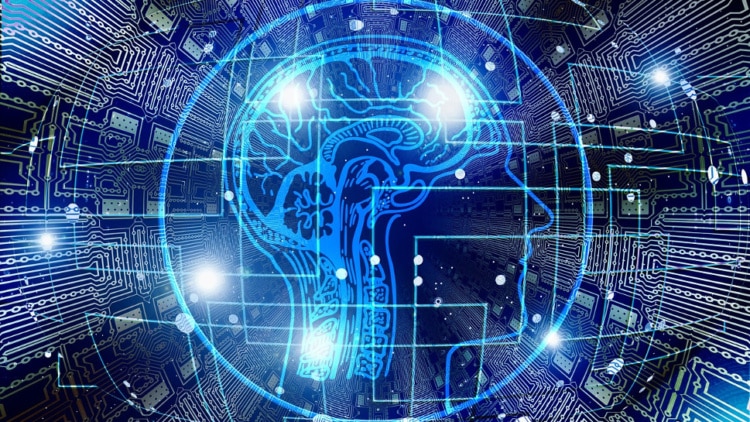Hey there, fellow tech enthusiasts! Alex Bobes here, your friendly neighbourhood CTO with a decade of experience under my belt. In today’s blog, I’ll dive into an essential topic that has been on my mind lately – the ethics of AI, specifically addressing bias and ensuring fairness in algorithmic decision-making.
As AI continues to evolve and infiltrate our daily lives, it’s crucial to understand how biases can arise in these systems and what we can do to mitigate their impacts. So, grab your favorite beverage and let’s dig into this thought-provoking subject together.
Part 1: Understanding AI Bias
Before we tackle the solutions, let’s first understand what AI bias is and how it can manifest itself in the systems we design and use.
AI Bias: What Is It and How Does It Happen?
AI bias occurs when an algorithm produces results that are systematically prejudiced due to incorrect assumptions made during the machine learning process. Biases can be introduced through various means, including the training data, the algorithm itself, or even the way the AI interprets and acts on the input data.
- Training data bias: The most common way AI systems can acquire biases is through the training data. If the data used to train the algorithm has underlying biases or is not representative of the population it is meant to serve, the AI will learn and perpetuate these biases.
- Algorithmic bias: Sometimes, biases are introduced by the algorithm itself. For instance, if an algorithm is designed to prioritize certain features over others, it may inadvertently introduce bias in the decision-making process.
- Interpretation and action bias: Lastly, biases can emerge from the way AI systems interpret and act on the input data. If an AI system is designed to prioritize certain types of outcomes or make assumptions about the input data, it may introduce biases into its decision-making.
Real-Life Examples of AI Bias
AI bias is not just a theoretical issue – it has real-world implications. Here are some examples of AI bias that have made headlines in recent years:
- Racial bias in facial recognition technology: Studies have shown that some facial recognition systems have higher error rates when it comes to identifying people with darker skin tones. This can lead to false accusations, wrongful arrests, and other harmful consequences.
- Gender bias in hiring algorithms: Some AI-powered hiring tools have been found to favor male candidates over female candidates due to the training data containing a higher proportion of successful male applicants. This results in perpetuating gender inequality in the workplace.
Part 2: Strategies to Mitigate AI Bias
Now that we have a better understanding of AI bias, let’s look at the steps we can take to address it and ensure fairness in algorithmic decision-making.
Diversifying Training Data
One of the most effective ways to reduce bias in AI systems is by diversifying the training data. Ensuring that the data is representative of the population the AI is meant to serve helps prevent biases from being perpetuated. This may involve collecting more data from underrepresented groups or actively seeking out diverse data sources.
Algorithmic Transparency and Explainability
To address algorithmic bias, it’s essential to strive for transparency and explainability in AI systems. This means creating algorithms that can be easily understood by humans, allowing us to identify potential biases in the decision-making process. Techniques like LIME (Local Interpretable Model-agnostic Explanations) and SHAP (SHapley Additive exPlanations) can be employed to improve algorithmic explainability.
Regular Auditing and Monitoring
Regularly auditing and monitoring AI systems is crucial to detect and address biases that may emerge
over time. AI models should be periodically reviewed to ensure their performance remains unbiased and fair. This may involve updating the training data, adjusting the algorithms, or tweaking the AI’s interpretation and action mechanisms.
Involving Diverse Stakeholders
Involving diverse stakeholders in the AI development process can help identify potential biases and improve fairness. This includes incorporating feedback from people with different backgrounds, cultures, genders, and experiences. By incorporating diverse perspectives, we can design AI systems that are more equitable and better suited to the needs of the communities they serve.
Establishing Ethical AI Guidelines
Establishing ethical AI guidelines within organizations is an essential step in addressing bias and ensuring fairness in algorithmic decision-making. These guidelines can help teams make more informed decisions during the design, development, and deployment of AI systems. Key ethical principles to consider include transparency, accountability, fairness, and respect for human autonomy.
Part 3: The Future of Ethical AI
The pursuit of ethical AI is an ongoing process that requires the collaboration of researchers, developers, and policymakers. As AI continues to advance, it is crucial to remain vigilant in identifying and addressing biases to ensure fairness in algorithmic decision-making.
AI Ethics Research and Collaboration
Researchers from various disciplines are coming together to study AI ethics and develop best practices for mitigating bias. By collaborating across fields such as computer science, sociology, psychology, and ethics, we can develop a more comprehensive understanding of AI bias and create more effective solutions.
Regulatory Frameworks for AI
As AI becomes increasingly integrated into our daily lives, it is essential for policymakers to establish regulatory frameworks that promote ethical AI development and deployment. This may include guidelines for data collection, algorithmic transparency, and auditing processes, as well as penalties for organizations that fail to comply with these regulations.
AI Education and Awareness
Promoting AI education and awareness among the general public is crucial in ensuring that ethical AI practices are adopted on a broader scale. By raising awareness about the potential biases in AI systems and the importance of fairness in algorithmic decision-making, we can foster a more informed and engaged citizenry that actively participates in the development of ethical AI.
My Conclusion
The ethics of AI, specifically addressing bias and ensuring fairness in algorithmic decision-making, is a critical topic that should not be taken lightly. As AI continues to shape our world, it is our responsibility as tech professionals and citizens to remain vigilant in identifying and addressing biases. By diversifying training data, promoting algorithmic transparency and explainability, regularly auditing and monitoring AI systems, involving diverse stakeholders, and establishing ethical AI guidelines, we can create a more equitable future for all.
I hope you enjoyed our deep dive into the ethics of AI! As always, I’m excited to hear your thoughts on this topic, so feel free to drop a comment below or reach out on social media. Until next time, keep exploring the ever-evolving world of technology!






